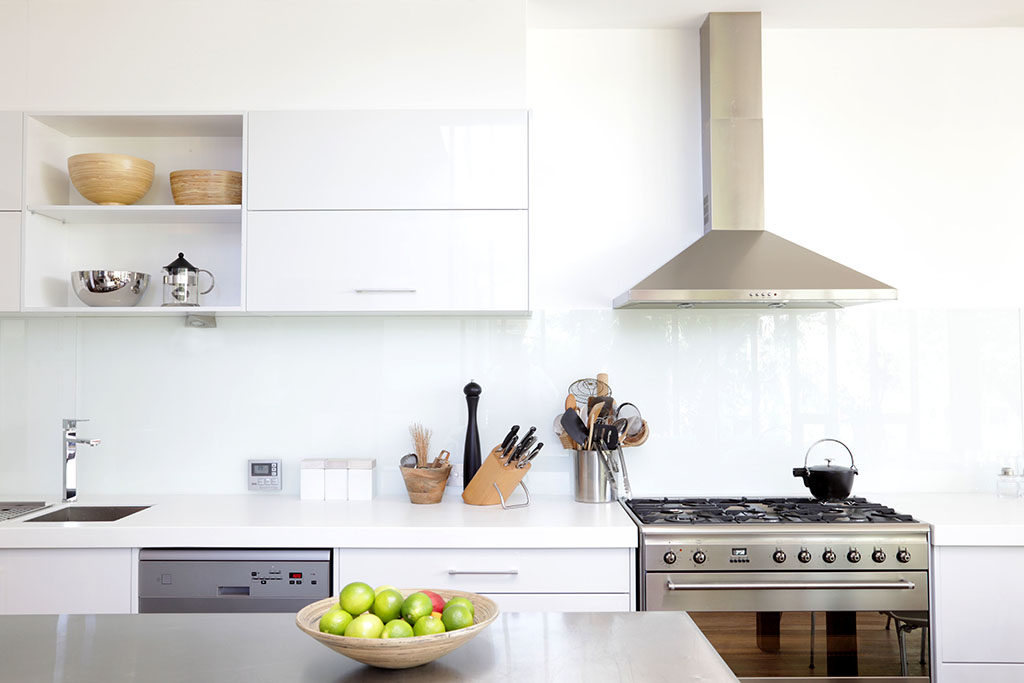Kitchen Remodeling – Tips To Keep Your Home Cooler From Waste Heat

When summer starts coming around, most people start to notice an increase in their electric bills. Your air conditioning unit needs a lot of energy to keep your home cool. This is especially true for areas such as the kitchen where a lot of heat is created from the appliances. You will notice your energy bill start to skyrocket without proper ventilation.
There are many ways to help reduce your energy costs and some of them can start in the kitchen. If you are planning a kitchen remodel, there are things to consider concerning your ventilation to remove waste heat and keep your air conditioning costs down.
Keeping The Heat Out Of The Kitchen
With all of the appliances in your kitchen and the amount of heat your create from cooking on the stove and in the oven, you will need to make sure proper ventilation is a top priority in your kitchen remodel. Cooking produces a lot of water vapor and waste heat on top of the smoke, odor and grease it creates. During the winter months, all of this waste heat may not seem like a big issue. However, during the summer you will surely start to take notice. Your ac unit will have to run longer and work hard to remove this excess heat. To keep this from being a problem, you will need a sufficient ventilation system that fits your space and your cook top.
Things To Consider When Choosing A Ventilation System
– Ducted vs Unducted – If you have a ventilation fan without a duct that leads outside, it’s not a true ventilation system. These are known as recirculating ranges. They have limited ability to reduce the amount of smoke, grease, heat and odors that are created when cooking. These hoods are attached to a wall above a cook top and pull the air through the filter and then recirculate that air back into the kitchen. Unfortunately, the air will usually still contain gases and odors along with heat and humidity. A true ducted ventilation system takes all of the heat, odors and gases and releases them outside.
– Ventilation Efficiency – Typically, range hoods with exhaust fans vented to the outside are considered the most effective types of systems. Having a fan above the range where the cooking happens take advantage of heated air naturally rising. Small ducts or duct systems that have too many elbows in them decrease the efficiency of the ventilation system.
– Ups And Downs – Most kitchen remodels will include an updraft system if possible. These are installed directly over the cooking source and helps to gather all of the heat and vapors that naturally rise up from the cooking process. The exhaust fan then grabs them and moves them to the outside through the ducts. Downdraft designs are not as popular and are designed to pull the air across the cook top surface and then downward through a duct that leads outside. Because these types rise no more than 10 inches above the surface, they are usually too short to be able to catch the vapors that rise from tall pots and pans.
– Depth And Width – For a range that is 30-inches wide, the vent or hood will also need to be at least 30-inches wide. If space is not limited, it is always better to have a hood that is wider than the range. The hood’s depth is also an important factor to consider. Typically, it should come out far enough to cover at least the middle of the front cook top burners.
– Ventilation Rate – When cooking appliances are set up against a wall, the ventilation for them will be more effective. For cook tops that are out in the open such as on a kitchen island, the ventilation needs to be much larger with a bigger fan. For ventilation systems that are against the wall, the minimum exhaust rate should be no less than 40 CFM or cubic feet of air per minute. This is per lineal foot of cook top. For ventilation systems that are out in the open, the minimum exhaust rate shouldn’t be less than 50 CFM per lineal foot.
Proper ventilation is necessary to keep your air conditioning unit from overworking and to keep your home cooler in the warmer months. A good ventilation system will rid your kitchen and home from excess heat that comes from your stove, refrigerator compressor, dishwasher and more to keep your kitchen nice and cool.